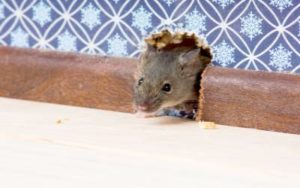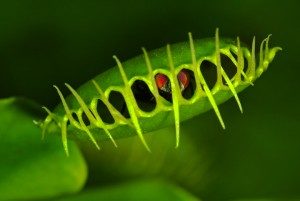
As the weather gets colder, you may start to notice an increase in insects and other unwelcome creatures in your home. This is a process called overwintering, which is when pests try to escape the increasingly cold weather, and it happens like clockwork every fall. Some species migrate to warmer climates, some burrow in or under debris, while others just try to get into our homes to warm up. It’s easy to avoid in most cases, but once they cross the threshold into your living space it becomes a big problem.
There are several types of pests known for trying to get in. The most difficult pests to get rid of, however, are the ones that make their way into the attic or behind your walls. These are the hidden dangers that you often don’t notice until they’ve caused real damage. This can include Asian lady beetles, rodents, termites, stink bugs, and wasps. Read on to learn more about these common pests that invade homes in the fall.
Contact us today to keep these fall pests out!
Asian Lady Beetles
White Asian Lady beetle are a little larger than ladybugs and share the same general shape and coloration. They look harmless at first glance, so what’s the problem? White Asian Ladies stick together in groups and use pheromones to communicate their location. So, if one or two get into your home, it can very easily balloon into a huge infestation. The good news is that these bugs aren’t known for stinging, biting, or destroying the household. Still, their presence could trigger respiratory issues in sensitive people. Because of this, it’s best, like with any insect infestation, to make sure the cracks and crevices of your home’s exterior are thoroughly sealed.
Rodents
Squirrels, roof rats, and mice are all known for their excellent climbing capabilities, and the odds are good that you’ve seen one of them scurrying across a fence or through some trees. With skills like theirs, they can easily get into your attic and make a nice and cozy nest to wait out the cold. Have you been hearing any scratching or gnawing noises from inside your walls? If so, you likely have a rodent inside your attic or wall voids. That means that it’s time to call an experienced rodent exterminator like Johnson Pest Control.
Stink Bugs
How do you catch a stink bug before things get smelly? The Brown Marmorated stink bug, an invasive species straight from the East, is the most common variety to find in the quiet parts of your house. They’re shaped like a shield, range in size from ¼” to ⅜, and colored in shades of brown and gray. When the cold season rolls around, they tend to stick to undisturbed spots in the home like the attic, crawlspace, or space between walls. Handling them can be tricky to do on your own, as if they feel that their lives are in danger they are known for releasing a titular smell that’s undeniable and definitely unpleasant.
Termites
Termites are the nightmare of any homeowner in America, with the estimated annual cost of damage done ranging up to $30 billion. These microscopic menaces always want to get inside your house. However, the most destructive species of termites are the subterranean termite, and they’re capable of burrowing deeper in the ground in the fall and winter and causing damage you won’t notice till spring. Termites in the home are focused entirely on consuming anything with cellulose. If you’ve noticed things such as blisters on painted, hollow-sounding wood and unexplained pinhole-sized holes, that means you’re in desperate need of service from one of our qualified exterminators.
Wasps
Most of the average wasp colonies don’t overwinter, which means that a majority of the population dies as the weather gets colder. However, fertilized queens are able to overwinter outdoors in hollow logs, stumps, under leaves or in structures such as the attics of homes. The most common way for wasps to get in is through attic vents that aren’t screened. So like with the stink bug and other pests and vermin, this can be prevented by making sure your attic is properly sealed from the elements.
Your Local Exterminator
Johnson Pest Control has been East Tennessee’s first call for pest control for over thirty years. We’ve earned the trust of homes and commercial properties in the Sevierville, Knoxville and Maryville areas, and we’d love to earn yours as well. If you want to avoid unwelcome fall pests, contact us today!
 With all of the at-home and DIY pest control solutions that you can find on the internet, it can be hard to tell what actually works to keep pests away without professional intervention. If you’re looking for a reliable source, you’ve come to the right place! The technicians at Johnson Pest Control have been serving the Eastern TN area with inspections, preventative maintenance, and extermination services for nearly 40 years.
With all of the at-home and DIY pest control solutions that you can find on the internet, it can be hard to tell what actually works to keep pests away without professional intervention. If you’re looking for a reliable source, you’ve come to the right place! The technicians at Johnson Pest Control have been serving the Eastern TN area with inspections, preventative maintenance, and extermination services for nearly 40 years.